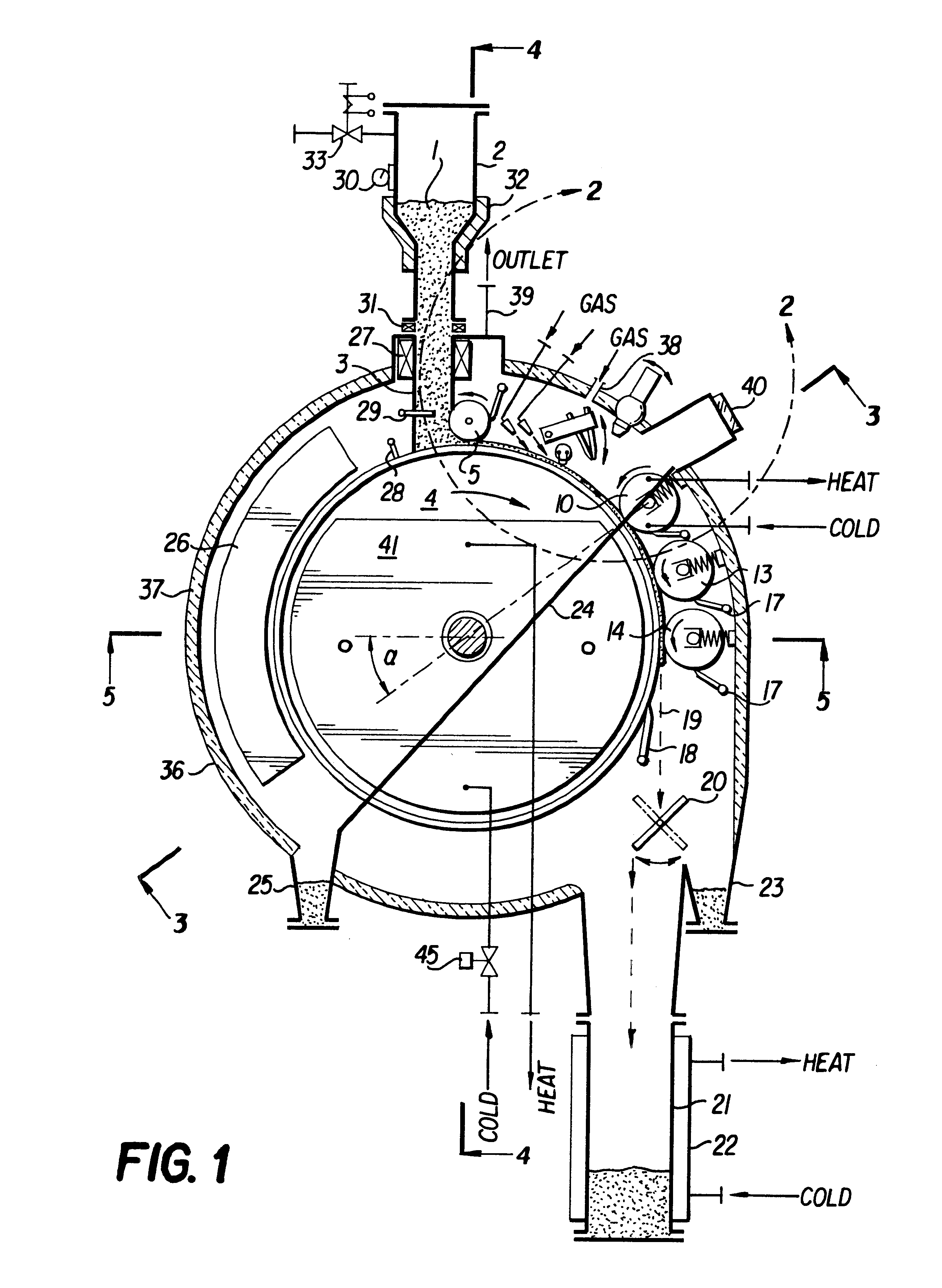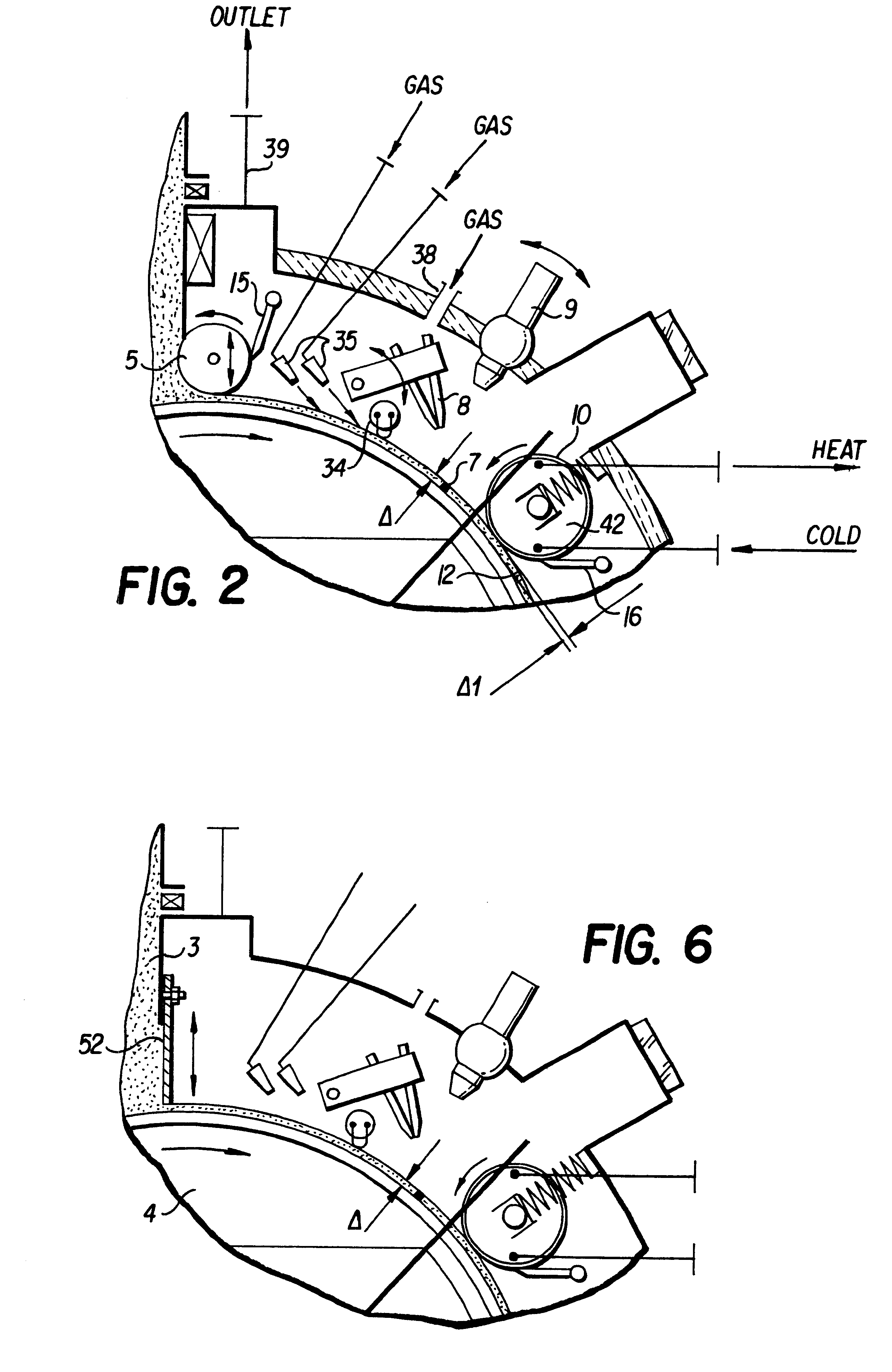Apparatus for self-propagating high temperature synthesis
a technology of high temperature synthesis and apparatus, which is applied in the direction of pyrolysis reactions, sub-atmospheric pressure processes, inorganic chemistry, etc., can solve the problems of low reactor capacity, inhomogeneous final product, and fundamental disadvantages of periodic operation of shs reactors
- Summary
- Abstract
- Description
- Claims
- Application Information
AI Technical Summary
Benefits of technology
Problems solved by technology
Method used
Image
Examples
example 1
In the apparatus of the invention as shown in FIGS. 1-7 were successfully synthesized the following compounds:
Simple carbides TiC, NbC, TaC
Complex carbides TaC / NbC, TiC / WC
Silicides MoSi.sub.2, Ti.sub.5 Si.sub.3
The main parameters of the reactor chamber were as follows:
Drum outside diameter--300 mm
Thickness .DELTA. of the charge mixture layer--2.5-3 mm
Thickness .DELTA. of the charge mixture layer for synthesizing of TiN--1 mm
Width of the charge mixture layer--34 mm
Capacity of the apparatus during synthesizing of TiC--7 kg / hr
Consumed power (without heating means)--0.2 kW
Mass of the apparatus--150 kg
Length of the apparatus--950 mm
Width of the apparatus--630 mm
Height of the apparatus--1850 mm.
PUM
| Property | Measurement | Unit |
|---|---|---|
| angle | aaaaa | aaaaa |
| temperature | aaaaa | aaaaa |
| thickness | aaaaa | aaaaa |
Abstract
Description
Claims
Application Information
 Login to View More
Login to View More - R&D
- Intellectual Property
- Life Sciences
- Materials
- Tech Scout
- Unparalleled Data Quality
- Higher Quality Content
- 60% Fewer Hallucinations
Browse by: Latest US Patents, China's latest patents, Technical Efficacy Thesaurus, Application Domain, Technology Topic, Popular Technical Reports.
© 2025 PatSnap. All rights reserved.Legal|Privacy policy|Modern Slavery Act Transparency Statement|Sitemap|About US| Contact US: help@patsnap.com



